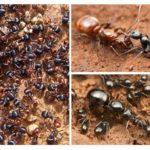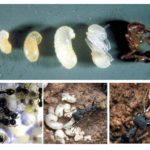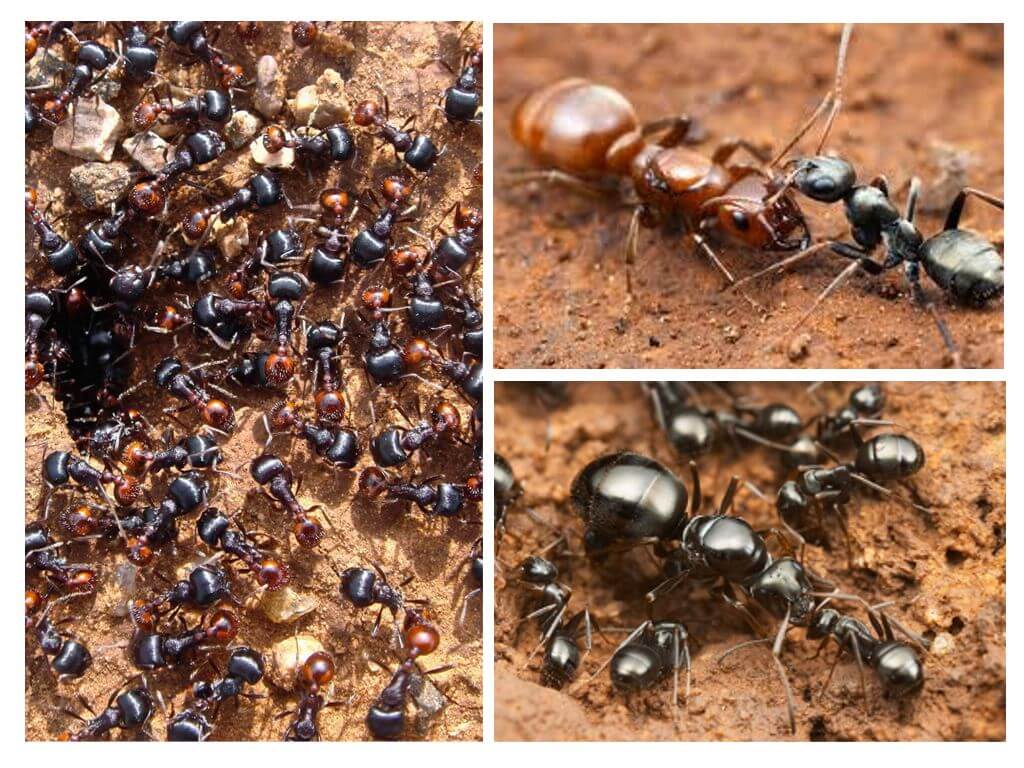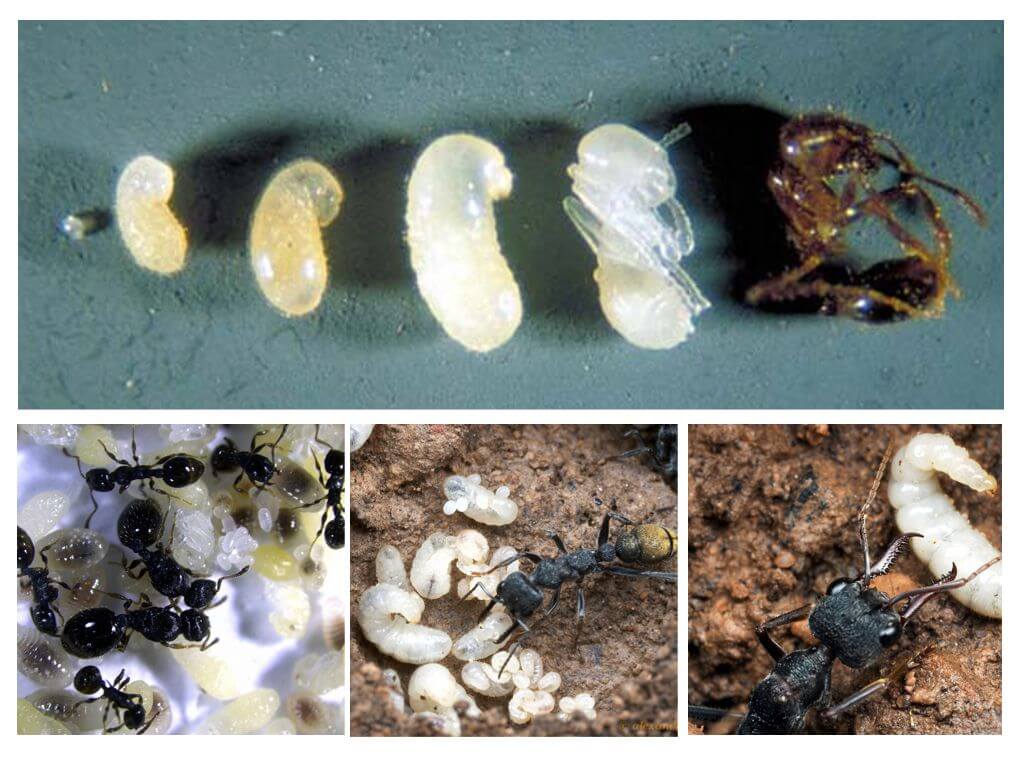Stages of ant development
- Ant family
- Stages of ant development
As ants reproduce, it is interesting not only for ordinary people, but also for scientists. A large colony of insects delights and horrifies. In the wild, insects build anthills, in trees and houses nests. The development of an ant goes through a full cycle of transformation. The whole process takes about a month.
Insect family
AT ant hierarchy the role of each individual is strictly regulated. Already from birth it becomes known who will fit what.
- At the head of the hierarchy is the queen, uterus. Once fertilized female, which reproduces eggs for life. Her body size is larger than the rest of society.
- The most numerous clan - working ants. One half is engaged in the search, restocking, construction anthillthe other is the cultivation of offspring, the order inside the cells.
- Another part of the ant family is young females, males. After fertilization, each young female leaves the family, looks for a suitable place, gives birth to a new generation. Males, having performed their main function, die within a week.
A photo of a large family is located below.
Life cycle each individual is somewhat different from the moment of birth. According to research scientists, the female lives about 25 years. Ants that are engaged in obtaining food, about 5 years. Working individuals that raise offspring inside an anthill - 3 years.
On a note!
The least fortunate are the full-fledged males, their life cycle is only a month. It is destined to be born to fertilize the female once.
Breeding process
The time of marriage games comes with the arrival of heat.Young males, females grow wings. Pairing flying ants going on the fly. The breeding stage lasts approximately 14 days. After that, all young males die, the female leaves the former family.
Finds a suitable place, lays eggs. From them the offspring should hatch within 2 weeks, mainly working individuals. Larvae feeds independently.
Young insects start building an anthill, provide uterus with food. Before that, she did not eat anything, the vital forces were maintained through internal secretions.
Interesting!
The uterus drops its wings, begins fruitful activity. All warm period of time reproduces offspring. The seminal fluid that entered her body once is enough to multiply throughout life. Constantly will allocate a portion of sperm for fertilization of eggs. The breeding of ants occurs at a rapid pace, thanks to this feature. Ants mate only 1 time in their life.
Eggs receive fertilization during the passage through the genital tract. Females are fertilized, males are produced from unfertilized eggs.Their further differentiation into working individuals and fertile males occurs during development in the larva phase. Depends on power supplycare
Development
Stages of development ants have a full cycle - egg, larva, pupa, adult. When ants are laying eggs, it depends on weather conditions. This usually occurs with the onset of persistent heat - in May. Possible second marriage period in June.
- Ant queen eggs can lay up to several hundred. Special cameras are assigned for them. It also contains the larvae. Helping maintain optimal conditions in the anthill workers individuals.
- In about a week, the larvae of ants hatch from the eggs. Adult individuals help to be born, gnawing through the shell. After hatching, the larvae are in the form of white worms, extremely voracious. Eat a large amount of vegetable, animal food. Together with plants, seeds, working ants haul larvae of aphids, carrion, worms.
- The rapid development of the larvae lasts about 2 weeks. After that, the worm stops feeding, turns into a pupa. Some species of larvae weave a cocoon.A few days later, the ant emerges from the pupa in the form of a full-fledged insect, but white. Under the influence of light, the cover hardens, darkens, the ants of the usual black, red color appear.
The whole developmental cycle from egg to adult lasts about a month. To slow down the process can adverse climatic conditions. Insects multiply rapidly, have a clear hierarchy, live in huge colonies, interestingly hibernate, together get food. At the head of this complex process is the fertile female.






 (votes: 4, Average rating: 4.75 out of 5)
(votes: 4, Average rating: 4.75 out of 5)


